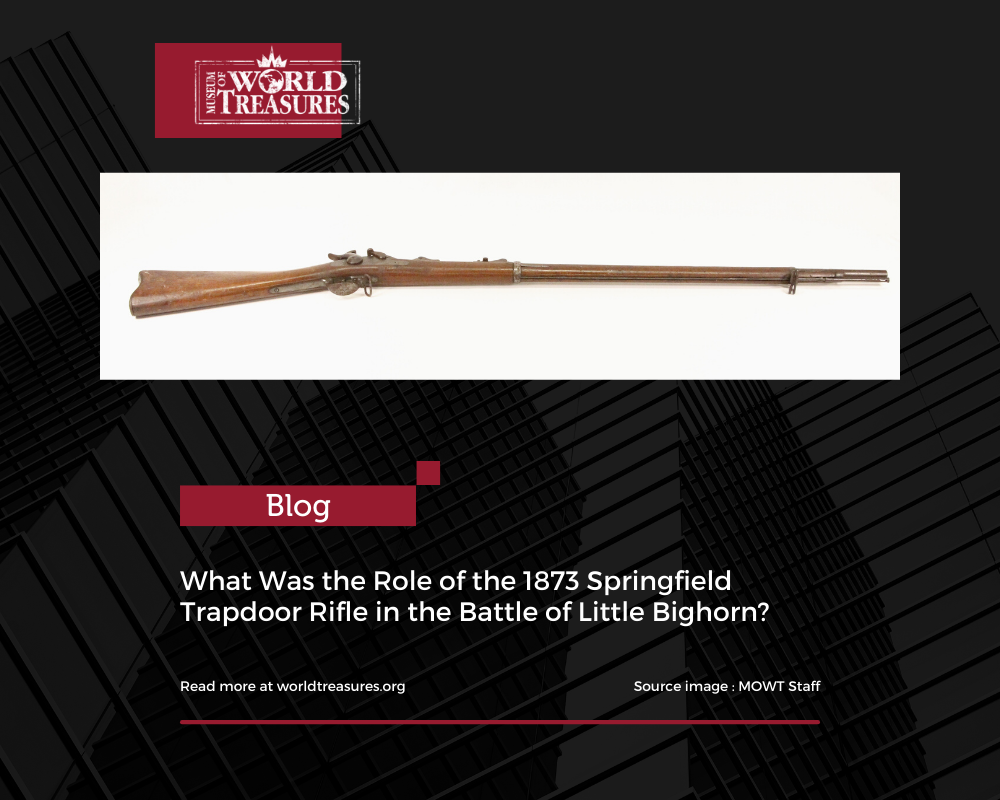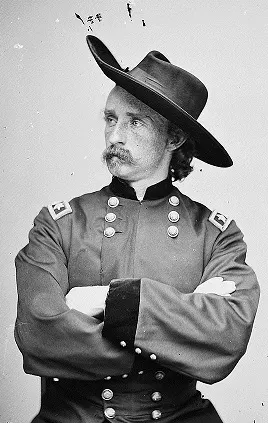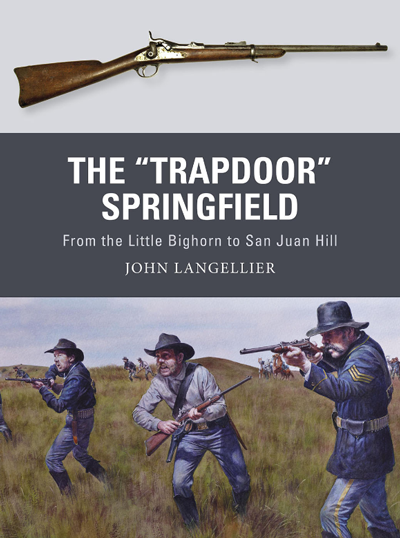What Was the Role of the 1873 Springfield Trapdoor Rifle in the Battle of Little Bighorn?
June 17, 2022

Lieutenant Colonel Custer and the Battle of Little Bighorn
The Battle of Little Bighorn has quite the reputation. There are many things about this battle that made it the outlier-- the American troops being completely killed in battle, for one. But it was also one in a long line of many wars against Native Americans, who were desperately trying to keep their land and preserve their way of life. Many times in history, this battle has been looked back upon as a horrible massacre of sorts; as a reason to justify what happened to natives in the age of the Indian Wars. But in reality, when put in context, Lieutenant Colonel Custer and the many who would follow marked an end to the native way of life as it was once known.

George Armstrong Custer Photo, Courtesy of the Library of Congress
1873 Springfield Trapdoor Rifle
Our artifact for this week's Trivia Tuesday is a 1873 Springfield Trapdoor Rifle. These were produced largely for the Indian wars, and played a large role not only in American government affairs, but also in the governmental affairs of native populations. At the time, many native populations were being forced off their land through treaties or settlements. Because everything about their cultures relied on the land around them, it was very hard to live elsewhere. A Cherokee raised in the swamps of Georgia, for example, would have to change diets, clothing, and simple navigation tactics so they could live in the Kansas Plains, where fish were few and grasslands were everywhere. With this in mind, the Indian Wars and the Battle of Little Bighorn become a bit of a different affair. Natives aren’t fighting for a piece of land; they’re fighting for the life they know.

Battle of Little Bighorn Map | Credit: National Park Maps
Lieutenant Colonel Custer was also fighting for a cause. His cause, of course, was the spirit of manifest destiny. This was the idea that America was destined to span from sea to sea; that the land from California to New York was already America’s for the taking. Custer was one of many in his ranks that took part in relocating natives. He actively put down rebellions and forced natives off land he believed was rightfully American.
All of this came to a peak in 1876. The Sioux on the Great Plains, led by Sitting Bull and Crazy Horse, were setting up for battle in numbers 3,000 strong. Not a year before marked the moment that Americans invaded their native territory after hearing there was gold on their land. The Sioux and the Cheyenne gathered at the battlefield were tired of being taken advantage of, and being ignored. They would move no more. Custer, on the other hand, had brought 600 men. He had assumed not much of a fight would happen; Perhaps he felt it was already won. Regardless, all of Custer’s men, including himself, were dead by the end of the hour.
flaws of the 1873 springfield trapdoor rifle
Many have speculated that the type of gun the Americans were using was the downfall: The fated 1873 Springfield Trapdoor Rifle. It had a reputation for being inaccurate and malfunctioning often. The problem was most likely the copper cartridges that famously expanded with the heat of the gun firing. This meant that guns could be rendered unusable unless one knew how to wedge out a cartridge and fire again. Truly, the rifle may have been a factor against the Sioux and Cheyenne that day, but certainly the lack of Custer’s numbers was a much more major factor in loss. Regardless, this rifle stands as a reminder of not only the Indian Wars but also one of the most interesting blunders of the American military.
The "Trapdoor" Springfield Rifle: From the Little Bighorn to San Juan Hill by John Langellier on Amazon.com.
Want to Learn More About the the history of american battles?
Come into the Museum of World Treasures and see our variety of military exhibits!
About the Blog Author: Hannah Maxwell
Hannah Maxwell is a Visitor Services Representitive at the Museum of World Treasures. They have a Bachelor of Science in History with minors in Ethinic and Gender Studies and are a frequent contributer to our blogs and Trivia Tuesday social media posts.
Works Cited
History.com Editors. 2018. “Battle of the Little Bighorn.” HISTORY. August 21, 2018. https://www.history.com/topics/native-american-history/battle-of-the-little-bighorn.
History.com Editors. 2018. “American-Indian Wars.” HISTORY. A&E Television Networks. August 21, 2018. https://www.history.com/topics/native-american-history/american-indian-wars.
“The Springfield Model 1873 Rifle – the Campaign for the National Museum of the United States Army.” n.d. Accessed May 19, 2022. https://armyhistory.org/the-springfield-model-1873-rifle/#:~:text=In%201873%2C%20the%20Ordnance%20Department.

